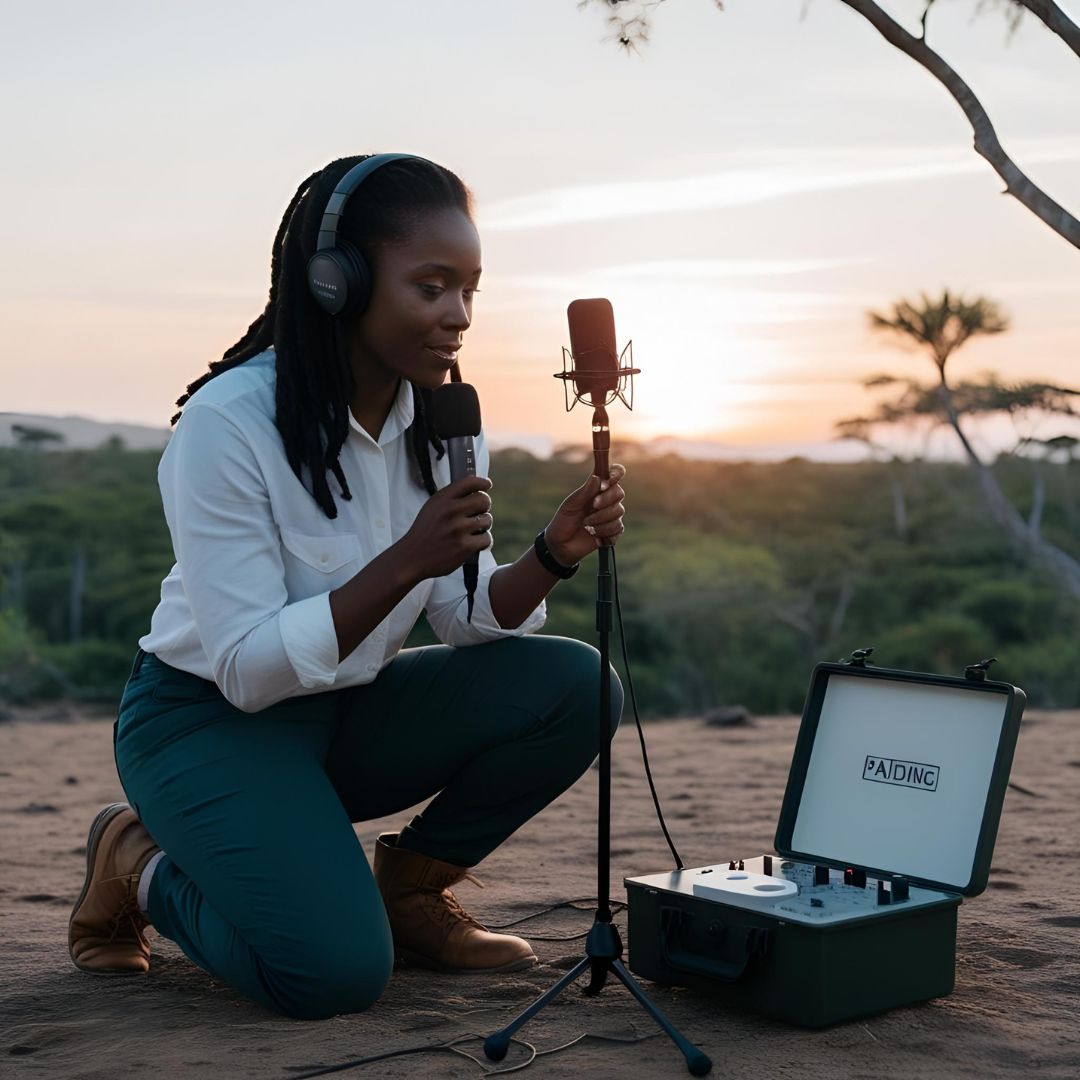The world is a vast sonic landscape filled with textures, rhythms, and unique frequencies that often go unnoticed. Field recording is the art of capturing these sounds in their original environments — whether it’s the call of an endangered bird in a rainforest, the wind sweeping across desert dunes, or the subtle sounds of a city waking up at dawn. This practice blends technique, artistic sensitivity, and an explorer’s spirit, allowing us to document the planet through the sense of hearing.
Below, we’ll explore what field recording is, how it works, the essential gear, effective techniques, and fascinating stories of rare recordings that preserve the sounds of a rapidly changing world.
What Is Field Recording?
Field recording refers to recording sounds outside of controlled studio environments, typically in natural, urban, or rural settings. It can include sounds of nature (water, wind, animals), human environments (markets, celebrations, transportation), and even unique sonic phenomena like underground seismic activity or the sound of cracking ice in the Arctic.
More than simply capturing audio, the goal is to document the authentic sound of a place. Many of these recordings are used in documentaries, music, films, art installations, games, and even scientific research. The richness of these recordings lies in the spontaneity and uniqueness of the original sound.
Essential Equipment for Field Recording
Capturing the sound of the world requires the right tools for varying conditions. Here are the key pieces:
- Portable Recorder: Models like the Zoom H5, Tascam DR-40X, or Sound Devices MixPre are popular for their quality and portability.
- Field Microphones:
- Omnidirectional: Capture sounds from all directions, ideal for open natural environments.
- Shotgun: Directional mics that focus on distant sources, great for isolating specific animal calls.
- Hydrophones: For capturing underwater sounds.
- Contact Microphones: Capture vibrations from surfaces like wood, metal, or ice.
- High-Quality Headphones: Crucial for real-time monitoring.
- Windshields (Deadcats): Essential in outdoor settings to block unwanted wind noise.
- Tripods or Boom Poles: For steady positioning and remote placement.
Techniques to Capture the World’s Sound
Technique matters as much as equipment. Some practical tips include:
- Arrive Before Sunrise: Dawn is rich in natural sounds, especially in forests and open fields.
- Record in Absolute Silence: Avoid breathing near the mic or making sudden movements.
- Observe Sound Patterns: Repetitive sounds like waves, rain, or insect cycles can be predicted and captured cleanly.
- Remain Still or Camouflaged: Wildlife reacts to human presence.
- Record More Than You Need: Longer recordings give you more options later.
- Take Notes: Record details like location, time, weather, and sound type to enrich your archive.
Exotic Locations and the Challenges of Field Recording
Recording in extreme locations offers unique challenges:
- Rainforests: High humidity, insects, and unpredictable sound layers. The Amazon, for instance, has one of the most complex soundscapes in the world but requires great care with sensitive gear.
- Deserts: Sparse but subtle sounds — sand friction, nocturnal animals, and dry wind. Lack of vegetation enhances distant sounds.
- Marine Environments: With hydrophones, you can capture whale songs, shrimp clicks, and oceanic echoes.
- Urban Zones: Every city has a distinct sound identity. Recordings of markets, protests, or public transport reveal social and cultural rhythms.
Rare Stories of Nearly Lost Sounds
Field recording also acts as a time capsule. Here are some notable rare recordings:
- The Last Call of an Extinct Bird: In 2000, the final known vocalization of the Kauaʻi ʻōʻō, a now-extinct Hawaiian bird, was recorded. It became a symbol of ecological fragility.
- Antarctic Ice Cracking: Microphones beneath ice sheets revealed surreal sounds of creaking and shifting — almost musical.
- Ritual Chants in Endangered Languages: Some indigenous cultures, with only a handful of speakers left, were recorded to preserve both language and sound expressions linked to spirituality.
- Active Volcanoes: The visceral sound of eruptions or bubbling lava in Hawaii captured by high-resistance microphones.
These recordings are more than technical achievements — they tell invisible stories, reveal vanishing worlds, and turn sound into memory.
An Artistic and Scientific Lens
Field recording sits at the intersection of science, art, and documentation. While researchers use it to monitor environmental changes, sound artists and musicians explore its expressive potential. Recordings may be raw or creatively manipulated depending on the purpose — but the common thread is always a respect for the original sound.
In the digital age, these sound files can be shared globally, accessible for study, sound therapy, sound design, or simply to ignite curiosity about worlds we’ve never seen — but can now hear.





